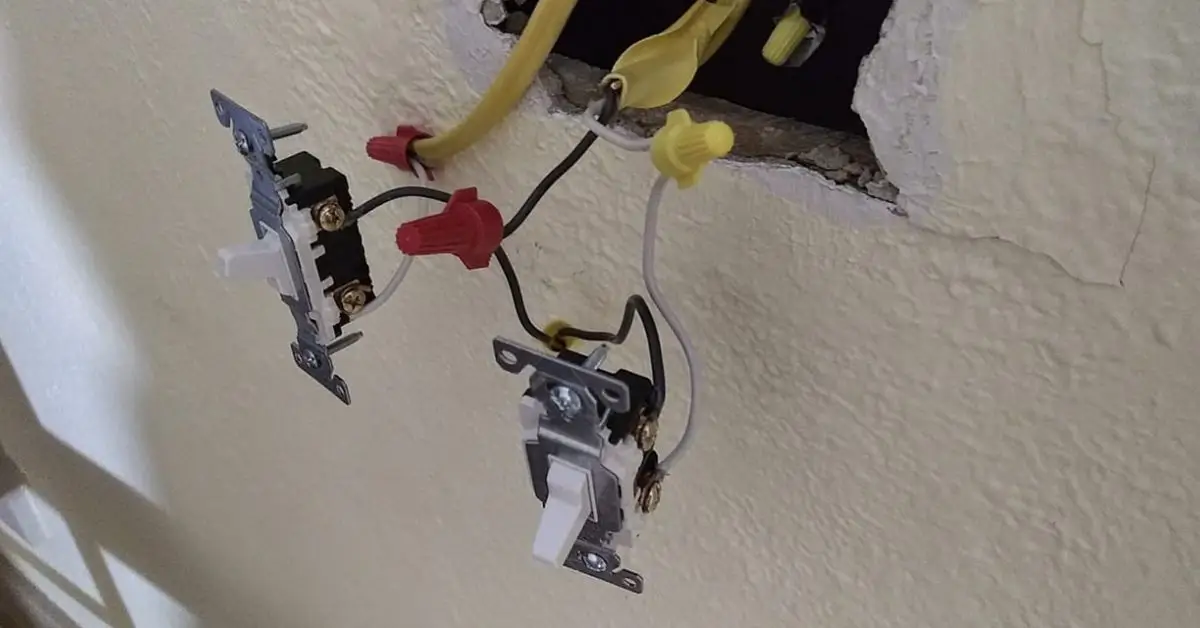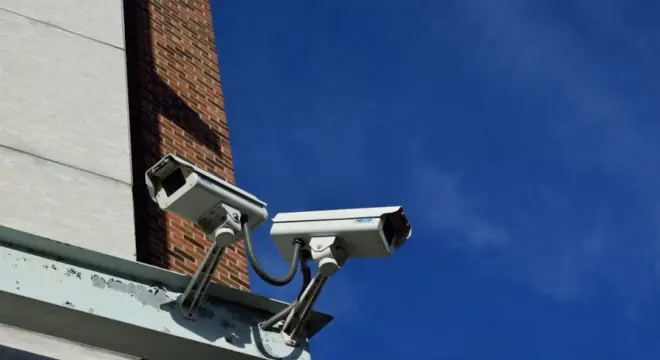5 Clear Warning Signs Your Light Switch Might Start a Fire
I’ve lost count of how many homeowners have told me they noticed something “a little weird” with a light switch—warm to the touch, maybe a faint crackle, or a flicker they thought was just a bulb issue. The problem? Most of them waited too long to take it seriously.
Electrical fires don’t usually announce themselves with smoke and flames right away. They often start silently, inside the walls, where wires overheat or short out. And the switch you use every day might be one of the first places the danger shows up.
In the United States, tens of thousands of home fires each year are traced back to electrical failures. It’s not always dramatic—it can be something as simple as a loose wire behind a light switch. That’s what makes this topic so important. Because if you catch the early signs, you can stop the risk before it ever turns into a fire.
This guide will walk you through five warning signs that your light switch could be more than just a little off—and give you clear steps on what to do if something doesn’t seem right.
Let’s start with what those signs actually look like.
What Warning Signs of an Electrical Fire Look Like in Light Switches
Electrical fire risks don’t usually begin with flames—they start with subtle warning signs. If you know what to look for (and more importantly, what not to ignore), you can catch a serious hazard before it becomes a disaster.
Here are the most common—and most critical—clues your light switch might be signaling a fire risk.
1. Flickering, Dimming, or Delayed Response
That moment when you flip the switch and the light takes a second too long to turn on? Or flickers once before settling? It’s easy to chalk that up to a bulb—but the issue could lie deeper.

Flickering or dimming lights may point to loose wiring, corroded terminals, or a faulty switch mechanism. All of these can cause inconsistent current flow, which creates heat over time. Heat leads to arcing—and that’s where fires often begin.
According to experts cited in Better Homes & Gardens, this kind of delay or flutter isn’t harmless—it’s a sign to investigate.
Flickering may feel minor, but it often reflects unstable electrical flow—a warning sign that something’s failing behind the wall.
2. Warm or Hot Switchplate (Even When Not in Use)
Touch your light switch. Is it warm—even if you haven’t used it for hours? That’s not normal.
A warm switchplate means there’s resistance building inside the wiring, usually from a loose connection or an overloaded switch. This heat is often the result of current trying to push through a failing component—and that means elevated fire risk.
Wikipedia lists high-resistance connections as a known cause of electrical fires —and your fingers are often the first tool to detect it.
You don’t need tools to find this one. Your hand can feel what your eyes can’t. Don’t ignore heat—fire follows heat.
3. Crackling, Buzzing, Sizzling, or Popping Sounds
Electrical systems are supposed to be silent. If a light switch makes buzzing, clicking, or crackling noises when you flip it—or worse, even when untouched—that’s a clear sign of danger.

These sounds usually come from arcing, where electricity jumps across gaps in loose wiring. It’s not just inefficient—it’s actively damaging your switch and the surrounding wall.
As noted by fire-monitoring company Ting, arcing is one of the top contributors to slow-burn electrical fires inside homes. You’ll hear the problem before you see it.
Sound is a sensory red flag. If you hear it, something is breaking down. And in electricity, breakdown means risk.
4. Burning Smell, Discoloration, or Charring Around the Switch
This one’s obvious—but too often, it gets dismissed.
If you notice a burning plastic or rubber smell, or see black marks, brown streaks, or melted areas around the switch, that’s not normal wear and tear. That’s thermal damage—and it means the problem has already gone too far.
If you can smell or see it, it’s past the early warning stage. Cut power immediately and call a licensed electrician. This is not a wait-and-see moment.
5. Switch Behaves Irregularly or Only Works Sometimes
When a light only comes on after you wiggle the switch, or the toggle feels loose, or the response is inconsistent, your switch is failing.

Inside, this often means degraded internal contacts, loose screws, or cracked housing—all of which can lead to intermittent arcing or short circuits. Even if the lights eventually work, the risk is still present every time you use it.
Functionality issues aren’t just annoying—they often precede failure in a safety-critical way. A bad switch may still “work,” but it’s not working safely.
What’s Actually Causing These Warning Signs?
Understanding why these warning signs appear is just as important as spotting them. Many homeowners notice flickering or a warm switch and assume it’s just a minor fault—but behind every symptom is a physical, electrical process that can spiral into a serious fire risk.
Here’s what’s really going on behind the wall:
1. Loose or High‑Resistance Connections (HRC)
When wires inside a light switch are loose, corroded, or poorly fastened, they create high resistance at the connection point. That resistance causes energy to turn into heat instead of flowing smoothly—often inside the wall where you can’t see it.
Over time, this heat degrades the insulation, leads to arcing, and can ignite flammable material nearby.
You’re not just dealing with a flicker. You’re dealing with a failing joint that could eventually light up behind drywall.
2. Old, Outdated, or Improper Wiring and Components
If your home was built decades ago—or if you’ve had DIY electrical work done—there’s a real chance that your switches or wiring aren’t up to current safety standards.
Older homes often weren’t designed to handle modern appliances, HVAC systems, or smart lighting loads. Add to that aging switches, cracked insulation, or non-grounded outlets, and you’ve got a system that’s easily overwhelmed.
This gives critical context—sometimes the problem isn’t the switch itself, but the system behind it that was never meant to support today’s electrical loads.
3. Arcing and Short Circuits
When a light switch is flipped—or when its internal parts are damaged—electricity can “jump” between contacts if the connection isn’t tight. This is called arcing, and it creates tiny, super-hot sparks that can quickly ignite dust, insulation, or plastic.
Unlike a dramatic circuit breaker trip, arcing often produces a slow, silent breakdown—until one day it doesn’t.
Arcing is usually the step right before ignition. It’s not a cosmetic issue—it’s a breakdown of electrical safety.
What To Do When You Spot These Signs
So, let’s say your light switch buzzes, smells odd, or feels warmer than it should.
Don’t panic — but don’t ignore it either.
These are early-stage warnings of a potentially serious electrical issue. Here’s what to do next:
1. Immediate Safety Actions
First priority: stay safe. If you notice any of the warning signs mentioned earlier, follow these steps right away:
- Turn off the circuit breaker connected to the affected switch. Don’t just stop using the switch — cut power completely. Going away soon? It’s a smart move to cut power to risky outlets while you’re gone. Unplug these 10 common devices to prevent fire and reduce energy waste.
- Avoid touching the switch again, especially if it’s warm, discolored, or making noise.
- Evacuate and call 911 if you see smoke, flames, or smell burning plastic. This isn’t the time to wait and see.
According to New London Electric, any sign of charring or a strong burning smell means you should shut off power immediately and call for help.
2. Call a Licensed Electrician (Don’t DIY This)

Once you’ve cut the power and there’s no immediate danger, your next step is to call a licensed electrician.
- Describe the symptoms clearly: buzzing, smell, flickering, or heat.
- Avoid opening or replacing the switch yourself unless you’re trained and certified.
- In older homes, ask your electrician to check other nearby outlets and switches on the same circuit — issues often occur in clusters.
3. Prevent Future Issues (Simple Maintenance Steps)
Once the problem has been fixed, here’s how to reduce the chances of it happening again:
- Regularly inspect your switches — feel for heat, listen for buzzing, and note any loose or unresponsive toggles.
- Replace old or worn-out switches, especially if they’re original to the house or more than 15 years old.
- Use compatible dimmers and bulbs — mismatched parts can overheat or cause flickering.
- Consider installing AFCI or GFCI breakers. These detect arcing or ground faults before they lead to fire or shock. Electrical safety is just one layer — combining it with strong home security habits gives you real peace of mind. See these 10 expert-backed tips every homeowner should know.
Final Takeaway: Small Signs, Big Consequences
Most people don’t think twice about their light switches. They’re used dozens of times a day — flicked without a second thought.
But those little switches are more than just plastic covers. They’re the access point to live electricity. And when they start acting up — flickering, buzzing, heating, or smelling odd — it’s your home telling you something’s wrong.
Here’s what I want you to remember:
- You don’t need to be an electrician to recognize danger. Trust your senses. If something feels off, it probably is.
- The warning signs are real. Whether it’s a burning smell or a delayed click, every symptom we discussed is a red flag worth noticing.
- Action doesn’t have to be complicated. Most issues can be resolved quickly and safely — if you don’t wait.
Light switches may be small, but the risk they carry isn’t. A tiny arc behind a wall plate can turn into a major fire if ignored. Your electrical system isn’t the only hidden vulnerability—your garage is another overlooked entry point worth securing. Here are 7 smart ways to protect it from break-ins.
So take that flicker seriously. Don’t wait for it to become smoke.
Want more clear, trustworthy home safety tips? Visit Build Like New for guides that help you protect what matters most — without the guesswork.
Disclaimer: This article is for informational purposes only. If you notice any electrical issues, it’s best to call a licensed electrician. Don’t try to fix wiring or switches on your own — safety should always come first.


